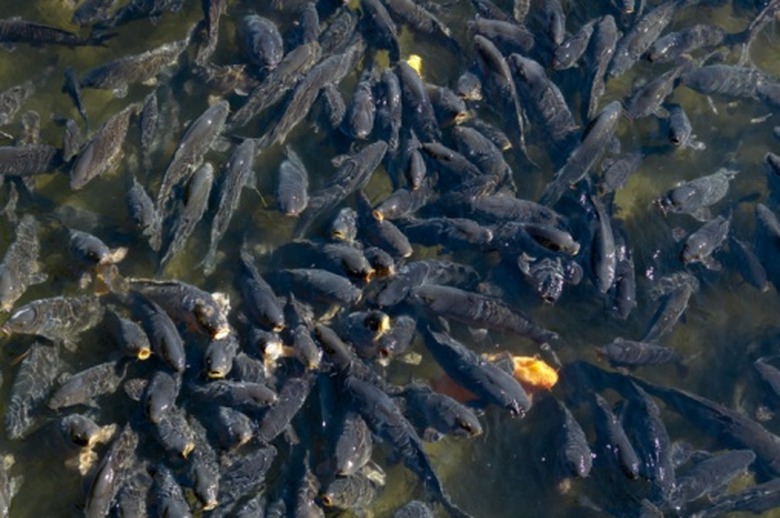How To Make Pellets For Feeding Tilapia
Things Needed
-
Vegetables
-
Protein
-
Food processor
-
Pasta maker, meat grinder or potato ricer
-
Kitchen knife
-
Freezer bags
Tip
Use a bag vacuum sealer to extend the shelf life of homemade foods.
Duck weed, collected from local ponds, is also a great tilapia feed.
The tilapia, a fresh water species of cichlid, has been part of the world culture for over 4,000 years. Pictures of the fish have been found engraved on ancient Egyptian tombs. Farming for food production rose in popularity in 1940´s Japan, spreading to Thailand, the Philippines, and eventually the United States. Today, tilapia is second only to the salmon in number of fish farms across the US. Smaller fish farmers, as well as huge commercial factories, all desire control over their stock's diet, as well as a way to feed the fish inexpensively. Homemade pellets meet both these demands.
Step 1
Puree a vegetable medley; use greens, such as lettuce or spinach, root vegetables, fruit or seaweed.
Step 2
Add protein to the mixture: This can be any type of fish meal, or sea food medley, dried, frozen or fresh, whichever suits the budget.
Step 3
Continue to blend until the mixture is very smooth. A little water, vegetable, or clam juice can be added as needed, just enough to obtain a dry dough-like consistency.
Step 4
Add some vitamins; semolina, a blue-green algae supplement, and fish oil tablets are great additives.
Step 5
Run the mixture through a pasta maker, meat grinder or potato ricer. As noodles emerge, use a kitchen knife to cut them into pellets.
Step 6
Place pellets onto a cookie sheet, or foil, and dry them in an oven on low heat; a dehydrater also works.
Step 7
Spray the pellets with extra oil during cooking, if desired. Once completely dry, store the pellets in freezer bags, where they will stay fresh for up to six months.
